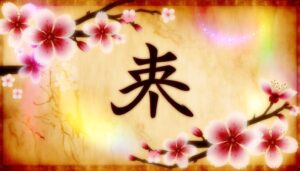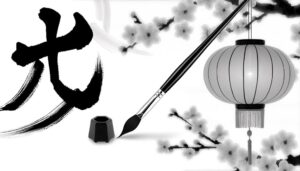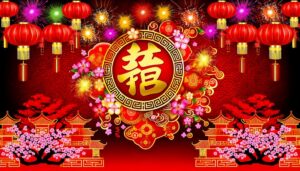What Is the Chinese Symbol for Trust No One?
The Chinese phrase for 'trust no one' is 谁都不信 (shuí dōu bù xìn), stemming from nuanced philosophical and historical contexts influenced by Confucianism, Daoism, and Legalism. The term combines characters meaning 'who' (谁, shuí), 'all' (都, dōu), 'not' (不, bù), and 'trust' (信, xìn).
It encapsulates a cultural ethos of caution and discernment. In traditional Chinese culture, moral integrity and sincerity are crucial, yet the phrase implies an embedded wariness.
This linguistic construct underscores a complex interplay of skepticism and trust that has shaped Chinese societal interactions for centuries. Continue exploring to uncover deeper cultural and philosophical insights.

Key Takeaways
- The phrase '谁都不信' (shuí dōu bù xìn) translates to 'Trust No One' in Chinese.
- The character '信' (xìn) means 'trust' or 'believe' and is composed of '人' (person) and '言' (speech).
- The syntactic structure of '谁都不信' emphasizes absolute distrust.
- In Chinese culture, trust is deeply connected to moral integrity and social harmony.
- The symbol reflects historical and philosophical caution influenced by Confucianism, Daoism, and Legalism.
Historical Context

The historical context of the Chinese symbol for 'trust no one' is deeply intertwined with the philosophical and socio-political evolution of ancient Chinese thought. Emerging from a milieu influenced by Confucianism, Daoism, and Legalism, this symbol reflects a nuanced understanding of human nature and governance.
Confucian principles emphasized hierarchical trust and moral integrity, while Daoist philosophy advocated for natural spontaneity and skepticism of societal constructs. Legalism, on the other hand, underscored strict control and mistrust as mechanisms to maintain order and authority. These intellectual currents coalesced during periods of political turbulence, notably the Warring States era, when mutual distrust was pervasive.
This way, the symbol encapsulates a historical narrative of cautious interaction shaped by philosophical doctrines and historical exigencies.
Linguistic Breakdown
Understanding the linguistic breakdown of the Chinese symbol for 'trust no one' requires an examination of the etymological roots, character composition, and semantic nuances embedded within the Chinese language.
The phrase can be translated as '谁都不信' (shuí dōu bù xìn), where '谁' (shuí) means 'who,' '都' (dōu) implies 'all,' '不' (bù) denotes negation, and '信' (xìn) signifies 'trust' or 'believe.'
The intricacy of this phrase lies in its syntactic structure and the placement of negation to convey absolute distrust. Each character contributes to a cumulative meaning, emphasizing the universality and intensity of the sentiment.
The linguistic choices reflect a profound cultural and philosophical stance, rooted in millennia of Chinese literary tradition.
Trust in Chinese Culture
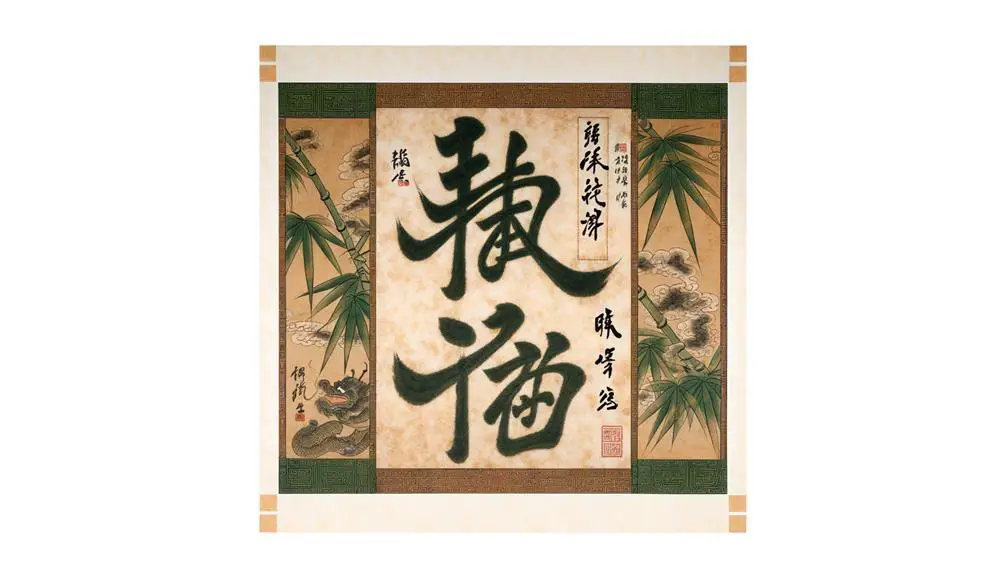
Trust in Chinese culture is a multifaceted concept deeply intertwined with historical, social, and philosophical dimensions, reflecting the importance of relationships, reputation, and communal harmony.
Rooted in Confucian ideals, trust (信任, xìnrèn) emphasizes moral integrity and sincerity in personal and professional interactions.
Guanxi (关系), or network of relationships, underscores the significance of mutual trust for social cohesion and business success.
Additionally, maintaining face (面子, miànzi) is essential; losing face can erode trust and damage one's social standing.
Trust is not freely given but earned through consistent, honorable behavior, and mutual respect.
This cultural framework ensures that trust is both a personal virtue and a communal asset, essential for harmonious living and societal stability.
Symbolic Interpretation
The symbolic interpretation of the phrase 'Trust No One' in Chinese culture requires an examination of its historical symbol origins, cultural significance, and modern usage contexts. Understanding these elements offers insight into how this sentiment has been represented and perceived throughout different periods in Chinese history.
Additionally, exploring its contemporary applications reveals the evolving nature of trust in a rapidly changing sociocultural landscape.
Historical Symbol Origins
Rooted in ancient Chinese philosophy and linguistic traditions, the symbolic interpretation of trust (信) and the concept of distrust permeate historical texts and calligraphy.
The character 信 is composed of two radicals: 人 (person) and 言 (speech), symbolizing the integrity of one's word. Historically, Confucian ethics emphasize trust as foundational to social harmony.
Conversely, the notion of distrust emerges from philosophical works such as the 'Art of War' by Sun Tzu, where strategic deception is valorized. Calligraphic representations from the Han Dynasty illustrate the duality of trust and caution in leadership.
Understanding these origins provides insights into the profound layers of meaning embedded in Chinese symbols, shaping attitudes toward trust and skepticism through millennia.
Cultural Significance Explained
Building on the historical roots of trust and distrust in Chinese philosophy, the cultural significance of the Chinese symbol for trust (信) manifests in various aspects of contemporary life, reflecting the enduring importance of integrity and skepticism in social interactions.
Rooted in Confucian and Daoist thought, trust (信) is fundamental to harmonious relationships and societal stability. However, the duality of trust and caution is equally emphasized, advising prudence in extending trust. This balance is evident in proverbs and adages that caution against blind faith.
Thus, the symbol for trust in Chinese culture encapsulates a nuanced understanding: while trust is crucial, it must be carefully considered and judiciously bestowed, reflecting a deep-seated cultural ethos of balanced interpersonal relations.
Modern Usage Contexts
In contemporary Chinese society, the symbol for trust (信) frequently appears in various domains, symbolically representing the intricate balance between faith and skepticism.
In business, 信 is pivotal in contracts, underscoring the necessity for mutual reliability.
Within interpersonal relationships, the symbol encapsulates trust as a cornerstone of emotional bonds, while also subtly acknowledging the potential for betrayal.
In digital communication, 信 often appears in discussions on cybersecurity, emphasizing the need for vigilance in an era of rampant misinformation.
The symbol's multifaceted usage underscores its profound relevance, reflecting societal values that oscillate between the ideal of trust and the pragmatic awareness of human fallibility.
Consequently, 信 serves as a cultural touchstone, guiding behavior and expectations across diverse contexts.
Modern Usage
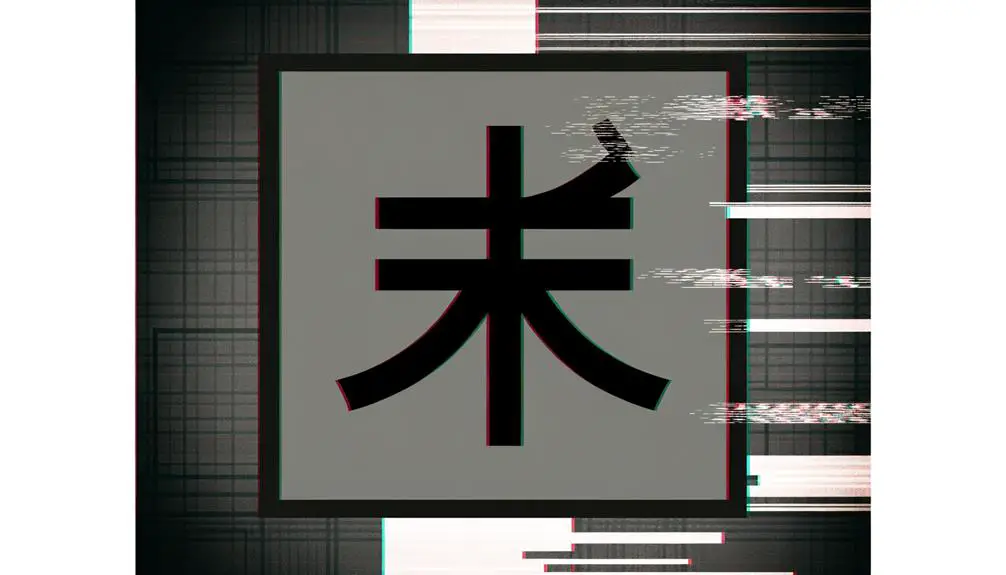
Although the phrase 'trust no one' may resonate with a sense of caution and skepticism in contemporary society, the Chinese symbol for this sentiment has evolved to hold nuanced significance in various modern contexts.
In digital communication, it often appears in discussions around cybersecurity and personal data privacy, reflecting the growing concerns about online trust.
Additionally, in the psychological domain, it can symbolize the complex layers of human relationships and the need for discernment.
Art and literature frequently employ it to explore themes of betrayal and self-reliance.
Consequently, the symbol transcends its literal meaning, embodying a broader commentary on the interplay between trust, vulnerability, and societal norms in today's interconnected world.
Cross-Cultural Perspectives
Understanding the Chinese symbol for 'trust no one' requires a nuanced examination of cultural symbolism variations and how these are interpreted differently across societies.
The concept of trust and its absence can manifest uniquely in symbolic communication, reflecting distinct societal values and historical contexts.
This underscores the importance of recognizing the diverse ways in which such symbols are employed and understood globally.
Cultural Symbolism Variations
Examining the concept of 'trust no one' through the lens of various cultural symbolisms reveals a complex tapestry of beliefs, values, and historical contexts that shape how different societies perceive and express caution and skepticism.
Diverse cultural expressions demonstrate unique methods of conveying this sentiment:
- Japanese culture: The phrase '人を疑わず' (hitowo utagawazu) warns about the unpredictability of human nature.
- Western proverbs: Expressions like 'Trust but verify' reflect a cautious optimism.
- African proverbs: Sayings such as 'Trust is earned, not given' emphasize relational dynamics.
- Arab culture: The phrase 'الثقة مفقودة' (althiqa mafqooda) underscores the rarity of trust.
- Indigenous wisdom: Various tribes use stories to illustrate the dangers of misplaced trust.
These variations highlight how the universal theme of caution is contextually adapted.
Interpretations Across Societies
The interpretation of the concept 'trust no one' varies significantly across different societies, reflecting distinct historical experiences, philosophical traditions, and social structures.
In Western cultures, influenced by individualism and skepticism, this phrase often underscores self-reliance and caution against potential deceit.
Contrastingly, in Chinese culture, where Confucian ideals emphasize social harmony and hierarchical trust, the notion might be perceived as disruptive.
In African societies with communal values, mistrust is often linked to social fragmentation and historical colonial legacies.
Similarly, in Middle Eastern cultures, shaped by complex tribal affiliations and historical conflicts, the concept can resonate with both caution and strategic alliances.
Therefore, the phrase 'trust no one' offers a multifaceted lens through which varied cultural paradigms and societal norms can be examined.
Symbolic Communication Differences
Given these varied interpretations, it becomes evident that symbolic communication plays a pivotal role in how the concept of 'trust no one' is expressed and understood across different cultures. Symbols are not merely linguistic tools but encapsulate deep-seated cultural values and historical contexts.
For instance, the Chinese character for 'trust' (信) can convey different nuances when combined with other characters, altering its meaning substantially.
- Cultural Context: Symbols derive meaning from historical and social contexts.
- Linguistic Variance: Different languages can alter the interpretation of the same concept.
- Visual Symbols: Icons and images can convey trust or distrust without words.
- Nonverbal Cues: Body language and facial expressions vary across cultures.
- Idiomatic Expressions: Phrases unique to a culture can encapsulate complex ideas about trust.
Understanding these nuances fosters cross-cultural communication and mutual respect.
Psychological Impact

Adopting the Chinese symbol for 'trust no one' as a guiding principle can have profound psychological repercussions, influencing both personal relationships and mental health. This mindset can lead to heightened anxiety, isolation, and difficulty in forming meaningful connections. The inability to trust others may foster a sense of perpetual vigilance and suspicion, which can erode overall well-being. Additionally, this principle can create a barrier to emotional intimacy, making collaborative efforts and social support systems less effective.
| Aspect | Potential Impact | Psychological Effect |
|---|---|---|
| Personal Trust | Reduced interpersonal trust | Increased suspicion |
| Relationships | Difficulty forming bonds | Emotional isolation |
| Anxiety Levels | Heightened vigilance | Chronic stress |
| Social Support | Weakened networks | Limited emotional support |
| Mental Health | Overall decline | Potential for depression |
Understanding these impacts necessitates a nuanced approach to cultural beliefs.
Media and Literature
In media and literature, the notion of 'trust no one' often serves as a pivotal theme, reflecting deep-seated cultural narratives and societal anxieties. This theme is particularly prevalent in Chinese storytelling, where historical contexts and philosophical underpinnings accentuate the complexities of trust.
The symbol for 'trust no one' carries layers of meaning and is frequently explored through various narrative devices.
- Historical dramas: Highlighting betrayals and political intrigue.
- Modern thrillers: Emphasizing deception and hidden motives.
- Folktales and myths: Showcasing moral lessons on trust and caution.
- Literary classics: Examining philosophical reflections on human nature.
- Contemporary novels: Reflecting societal concerns about authenticity and reliability.
Such representations underscore the universal relevance of this theme, resonating across various literary and media forms.
Trust Vs. Distrust

Moving through the delicate balance between trust and distrust is vital for building genuine relationships and recognizing red flags.
In Chinese culture, where trust is often earned rather than assumed, the symbolic representation of mistrust underscores the importance of vigilance and discernment.
Understanding these dynamics can inform both personal interactions and broader societal engagements, fostering a more nuanced approach to relational dynamics.
Building Genuine Relationships
Establishing genuine relationships requires a nuanced understanding of cultural contexts and the delicate balance between trust and distrust. In cross-cultural settings, particularly within Chinese society, the dynamics of trust are profoundly influenced by historical, social, and familial factors. Cultivating meaningful connections necessitates recognizing and respecting these unique elements.
Key considerations include:
- Reciprocity: Mutual exchange of favors builds trust over time.
- Face (Mianzi): Preserving dignity and respect is essential.
- Guanxi (Relationships): Leveraging personal networks for mutual benefit.
- Patience: Trust is earned gradually through consistent actions.
- Communication: Open, honest dialogue fosters understanding and reliability.
Understanding these principles not only enhances personal interactions but also contributes to more effective professional and social engagements within Chinese cultural contexts.
Recognizing Red Flags
Identifying red flags in the delicate balance between trust and distrust is important for navigating Chinese cultural landscapes effectively. In Chinese society, subtle cues often indicate deeper meanings. For example, excessive flattery or evasiveness can indicate insincerity. Similarly, a lack of reciprocal gestures in gift-giving or hospitality may suggest underlying distrust. Understanding these nuances requires cultural sensitivity and a keen eye for detail.
Additionally, abrupt changes in communication patterns, such as unexplained delays or sudden unavailability, can serve as warning signs. By recognizing these indicators, one can navigate relationships with greater awareness, fostering interactions that are both respectful and prudent. Therefore, the ability to discern trust from distrust is an essential skill in maintaining harmonious and genuine connections.
Famous Quotes
Throughout history, various famous quotes have echoed the sentiment of distrust, reflecting a universal skepticism that transcends cultural boundaries. These words of caution emphasize the importance of vigilance and critical thinking. Notable examples include:
- 'Trust, but verify.' – Ronald Reagan
- 'Love all, trust a few, do wrong to none.' – William Shakespeare
- 'The trust of the innocent is the liar's most useful tool.' – Stephen King
- 'Don't trust the person who has broken faith once.' – William Shakespeare
- 'In God we trust, all others must bring data.' – W. Edwards Deming
These quotes illustrate the enduring nature of distrust in human interactions, reminding us to be judicious in whom we place our confidence. They serve as timeless reminders of the complexities of human relationships.
Personal Reflections

Reflecting on personal experiences and cultural narratives, one can observe that the concept of trust—or the lack thereof—permeates various aspects of individual and societal interactions, shaping behaviors, decisions, and relationships.
In diverse cultural contexts, trust is often navigated through intricate social norms and historical precedents. For instance, in Chinese culture, historical narratives and folklore frequently underscore caution and wariness in interpersonal dealings, perhaps mirroring broader societal experiences of betrayal and political intrigue.
Personal reflections reveal that the axiom 'trust no one' can serve as a protective mechanism, fostering vigilance. However, this pervasive skepticism can also hinder the development of genuine connections, leading to a more isolated existence.
As a result, trust remains a complex, multifaceted element of human experience.
Conclusion
In the vast tapestry of Chinese culture, the symbol for 'trust no one' weaves together history, linguistics, and philosophical nuance.
Trust, a delicate thread in the fabric of human relationships, contrasts starkly with the isolation of distrust.
This symbol encapsulates a timeless tension, reflecting both ancient wisdom and contemporary relevance.
Through its intricate strokes, one glimpses the enduring complexity of human interactions and the perpetual dance between faith and skepticism.

